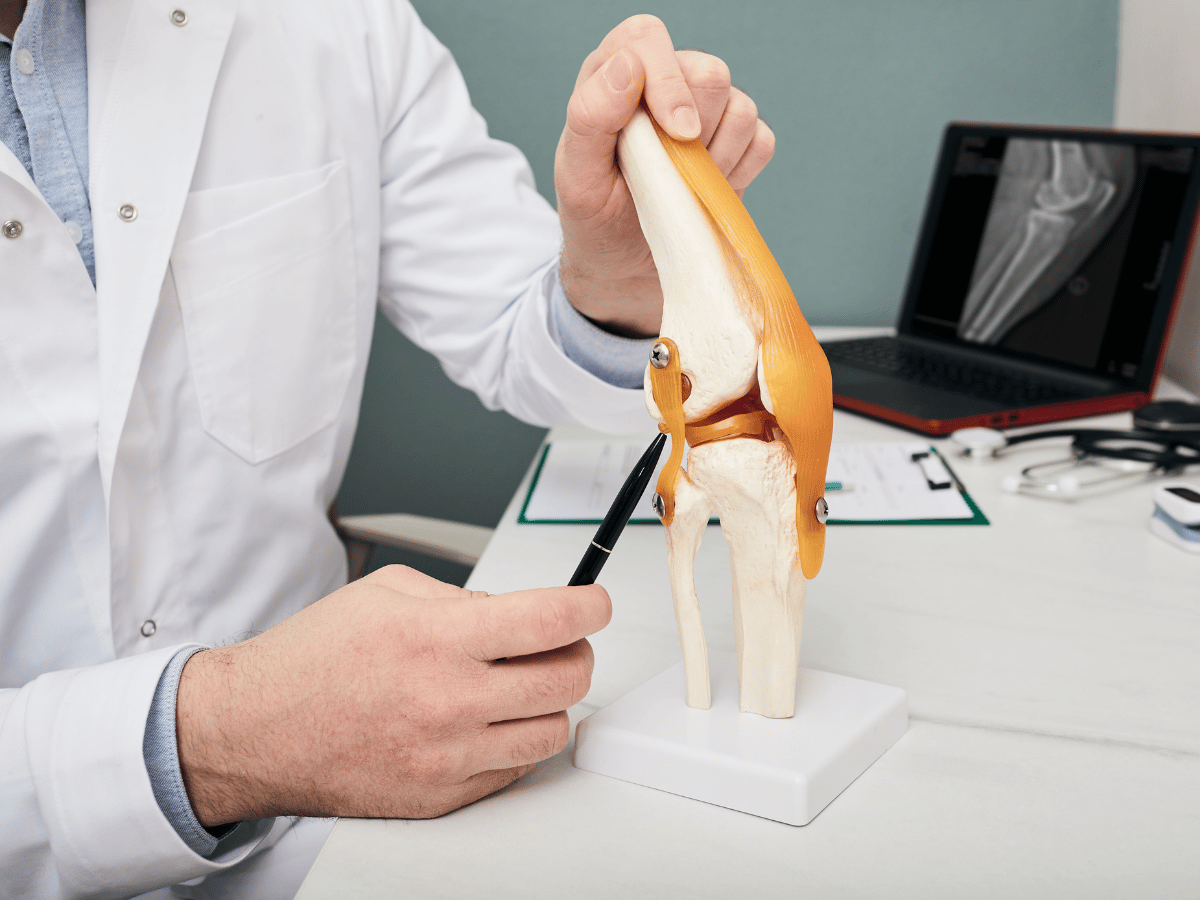
Ligament injuries occur when one or more ligaments, those tough, elastic tissue bands connecting bones at a joint, are overstretched or torn. These injuries don’t just sideline athletes; they affect anyone who takes a misstep off a curb or twists an ankle during a morning jog.
The extent of a ligament injury can range from a mild sprain to a complete rupture. These injuries compromise joint stability and functionality, making daily movements painful or impossible without treatment. While knees and ankles are the most vulnerable, shoulders, wrists, and thumbs are also common areas for ligament damage.
Ligaments are the body’s internal “seat belts”, keeping joints from moving too far in any one direction. For example, the anterior cruciate ligament (ACL) in your knee prevents your shinbone from sliding too far forward.
We often take these fibrous bands for granted until they’re damaged. Their structure allows limited flexibility, which is precisely why a sudden twist, blow, or excessive stretch can easily snap or tear them. Once injured, the body’s natural healing process begins, but not all ligaments recover equally well on their own.
Let’s talk about triggers. Sports injuries top the list, especially in activities that involve pivoting, jumping, and quick direction changes, think soccer, basketball, skiing, and football.
Some of the most common causes include:
Several risk factors increase susceptibility:
Women are also more prone to ACL injuries due to anatomical and hormonal differences, especially in sports environments.
So how do we know we’ve crossed the line between a joint that’s sore and one that’s seriously injured?
Common signs of ligament injuries:
While minor sprains may only cause discomfort, complete tears often make everyday movement nearly impossible without help.
Accurate diagnosis is essential, not just to heal but to prevent further damage. Physicians typically start with a comprehensive physical examination, checking for swelling, tenderness, and hierarchical movement.
However, in many cases further imaging is needed:
Treatment depends on the injury’s grade. Ligament injuries are classified into three levels:
For Grade I and some Grade II injuries, conservative management may be enough:
Grade III tears often require surgical intervention, especially in active individuals or athletes. Procedures may involve:
Laser-assisted techniques and minimally invasive arthroscopy have improved recovery times and outcomes dramatically in recent years.
Rehabilitation isn’t just a step, it’s half the journey back to full function. Skipping or rushing therapy often leads to chronic issues or reinjury.
A personalized physical therapy program incorporates:
Patients recovering from ACL surgery, for example, typically undergo at least 4–6 months of physical therapy before returning to high-impact sports.
Prevention takes planning and consistency. Here’s how we can reduce the risk:
For those in high-risk professions or sports, working with physical trainers and orthopedic specialists to design safe movement strategies is invaluable.
Ignoring a ligament injury, or treating it inadequately, invites bigger problems.
Some long-term effects of untreated ligament damage include:
Follow-up care and consistent rehab often determine whether recovery is short-lived or sustaining.
Exciting things are happening in the world of ligament injury treatment.
Emerging therapies and trends include:
Researchers at institutions like the National Institutes of Health and Mayo Clinic continue to explore gene therapies and stem-cell solutions that may one day replace injured ligaments altogether.
If you’re dealing with joint pain, instability, or know you’ve suffered a ligament injury, don’t delay your recovery. The compassionate orthopedic and sports medicine experts at South Florida Multispecialty Group are ready to evaluate your injury and build a personalized treatment plan from diagnosis to full recovery. Let’s get you moving again with strength, confidence, and peace of mind.
Reach out to SFL Medical Group to schedule your ligament injury consultation today and take your first step toward healing.
A ligament injury refers to overstretching or tearing of ligament fibers that connect bones and stabilize joints. It can be mild (sprain) or severe (complete tear).
They’re often caused by sudden twisting, impacts during sports, improper movements, or gradual wear from repetitive use.
Diagnosis includes a physical exam along with imaging tests such as MRI or X-rays to assess ligament integrity and rule out fractures.
Treatment ranges from rest and physical therapy for mild cases to surgery for complete ligament tears, often followed by rehabilitation.
Recovery varies. Mild sprains may take weeks, while complete tears requiring surgery can take 6–12 months for full recovery.
Yes. Untreated injuries may lead to joint instability, chronic pain, and long-term issues such as osteoarthritis.
Rehab typically includes flexibility, strength training, and balance exercises. Programs are tailored to the individual’s specific injury and level of activity.
Absolutely. Proper warm-ups, strength training, technique awareness, and wearing supportive gear significantly reduce the risk of injury.
Your well-being is our top priority. Reach out today to discover how our dedicated team can support your health journey.
Have questions or want to learn more? Use the form below to get started!
Connect with South Florida’s trusted multispecialty care team and take control of your health with compassion and convenience.
©2025 South Florida Multispecialty Medical Group. All Rights Reserved.